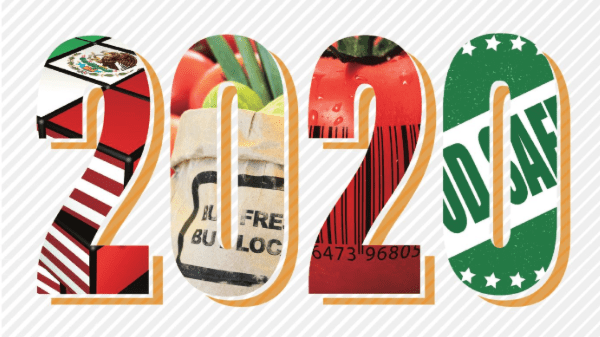Two years ago, in 2018, there were several high-profile recalls and 2019 had its share, including salmonella, listeria, and cyclospora outbreaks involving apples, papaya, melons, spinach, romaine, mixed vegetables, Brussels sprouts, cauliflower, green beans, and basil, to name a few.
“Food safety is a huge potential issue for the industry and it’s not going away,” says Steve Lutz, senior vice president of insights and innovation at Category Partners, LLC, based in Idaho Falls, ID.
“Consumers are sensitive to it, and the standard is zero safety issues. That’s a high bar and it requires constant vigilance. Systems for tracking and measurement and protocols are all getting better and help with prevention, but you’re always one problem away from a real issue.”
“Despite the fact that the industry is, overall, better positioned to both prevent a food safety issue and react if one occurs, we’ll see increased recognition and reporting of outbreaks,” predicts Jennifer McEntire, vice president of food safety and technology for United Fresh Produce Association BB #:145458 in Washington, DC.
She emphasizes, however, that this does not mean food is less safe.
Anthony Zagrafos, founder and CEO of Pleasanton, CA-based SafeTraces, which develops new traceability technologies, disagrees. “We all want to believe the industry is better positioned to prevent outbreaks, and better prepared to deal with them if or when they occur.
“Unfortunately, the facts do not support this,” Zagrafos contends.
He said outbreaks occurred in 2018 and 2019 involving romaine lettuce, and “the root cause of the problems and sources of the tainted products were never properly identified.”
Trends like restaurant delivery add to the food safety equation. Delivery puts tremendous pressure on restaurants while also squeezing margins, which Zagrafos says “cannot possibly improve food safety. I’m concerned we’ll start seeing an increase in incidents stemming from poor preparation practices in the near future.”
Other related food safety challenges include the Produce Safety Rule’s water component, and further responsibilities for importers under the Foreign Supplier Verification Program.
“Managing water that touches produce, whether on the pre- or postharvest side, needs to remain an area of focus,” advises McEntire, “along with Good Agricultural Practices, employee hygiene, and strong sanitation programs.”
Mike Bentel, founder of Food Safety Management Advisors and an educator at Brightwater’s Center for the Study of Food in Bentonville, AR, explains, “The rules have been written and they’re not going to be changed.”
What’s key at this juncture, he stresses, is “the industry must understand the rules, identify whether they’re in compliance, and figure out how to address any gaps.”
This is a multi-part series adapted from the January 2020 issue of Produce Blueprints, featuring a variety of experts predicting what will be top of mind in 2020.



